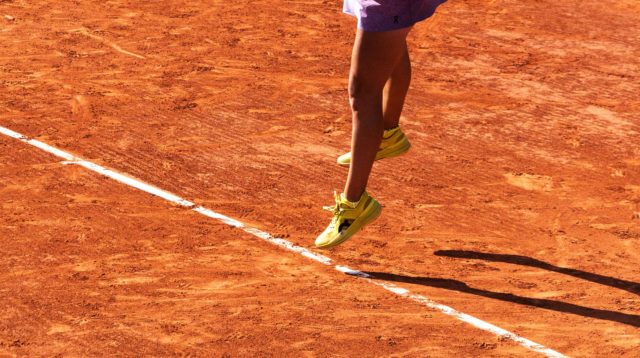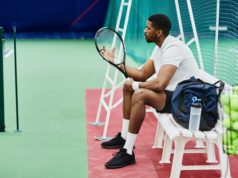Mastering tennis footwork for intermediate and advanced players
By Willy Campos, Universal Tennis Academy, James Creek High Performance Tennis Director
“In tennis, your racquet may hit the ball, but your feet can get you to the next level.”
Footwork might be the unseen weapon on court. On a warm weekend morning in Atlanta, tennis courts across the city come alive with the thump of tennis balls and the squeak of shoes on hardcourt. It’s ALTA and USTA match day and competition is fierce.
Players have heavy topspin, strong serves, and solid strokes, but the real difference-maker isn’t always in the swing. It’s in the feet.
For intermediate and advanced players, footwork is more than just movement; it’s the foundation of every point. It allows you to take time away from your opponent, find your ideal strike zone, and recover for the next shot. Without it, even the most powerful forehand loses its bite.
The Three Pillars of Elite Tennis Footwork
The Split Step – Your Launch Pad. The split step is tennis’s universal trigger for movement, a small hop taken just before your opponent strikes the ball, letting you react instantly in any direction. When timed perfectly, you land on the balls of your feet, weight evenly balanced and muscles ready to explode. We as coaches drill this skill relentlessly, because a late split step can make even the fastest player look slow. That’s why it should be practiced and refined every single day.
The First Step – Speed’s Secret Weapon. In tennis, speed isn’t just about sprinting faster, it starts with the very first step. The moment you recognize the ball’s direction, your first push-off determines how quickly you get there. Pros push off the inside foot, the one closest to the direction they need to move for maximum efficiency. An explosive first step can turn a desperate scramble into an attacking opportunity.
Prep & Recovery – Staying in the Rally. Once you reach the ball, small, quick prep steps (also called adjustment steps) fine-tune your positioning for the perfect contact point. These are short, rapid movements that help you control your stride length and stride frequency depending on the ball’s speed, spin, and height. A well-timed adjustment keeps you balanced and lets you strike the ball in your ideal zone.
After the shot, recovery steps — often crossover or shuffle movements — get you back to a neutral position, ready to respond again. Controlling your stride length and frequency here is just as important: too long and you may arrive off-balance, too short and you may lose precious time. This constant dance of approach, adjustment, and retreat keeps advanced players balanced and in control, even during high-speed rallies.
Training Beyond the Baseline
Elite footwork isn’t built in matches alone; it’s sharpened through targeted drills on and off the court. In Atlanta, intermediate and advanced players have access to academies and programs that focus on live-ball drills demanding quick reactions and continuous adjustment to ball pace. Tennis-specific conditioning is also key, improving both speed and endurance so movement stays sharp deep into a match.
Off-court work matters just as much. Shadow drills develop proper stance and movement patterns. Agility ladders build rhythm and coordination. Jump rope trains lightness on your feet, while plyometric jumps add explosive power for sudden changes of direction. Even 15 minutes of focused footwork training, three times a week, can deliver noticeable improvements.
From Practice to Match Results
Atlanta’s competitive tennis scene is the perfect proving ground for your movement skills. Different opponents will challenge your footwork in different ways: some pull you wide with angles, others drag you forward with drop shots. Solo practice can be just as valuable. Shadow swings and wall drills help groove your split step, first step, and recovery patterns until they become second nature.
Footwork may not draw as much attention as a 100-mph serve or a blistering backhand winner, but in competitive tennis, it’s often the deciding factor between winning and losing. Great movers arrive early, balanced, and ready — before the ball even bounces.
The Bottom Line
The next time you step on court, focus on your feet. Sharper, more efficient movement means reaching more balls, controlling more points, and ultimately winning more matches. Don’t wait for luck; prepare for your next match. Work on your footwork and keep building endurance, speed, balance, and stamina. In this game, control is everything.




